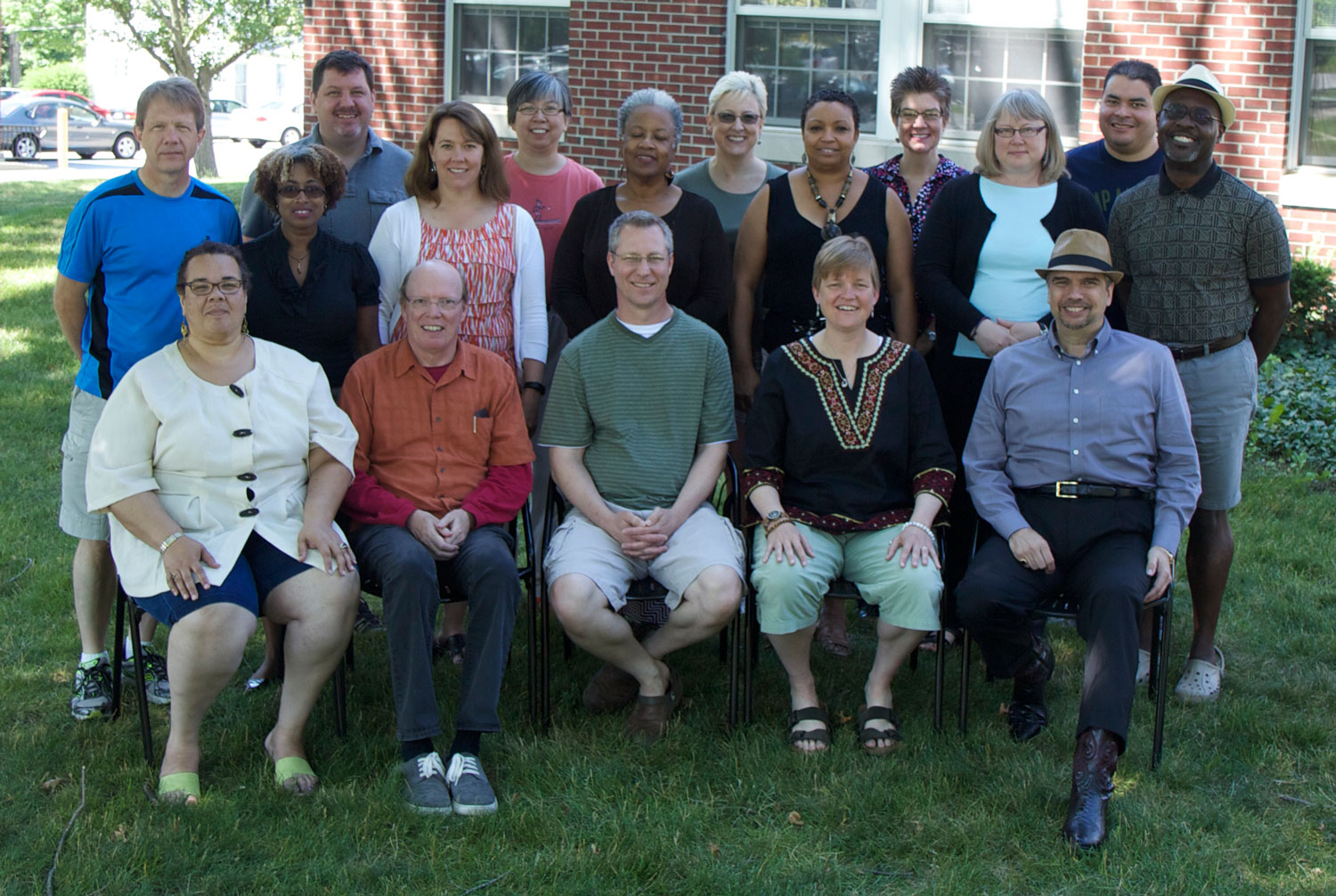2014-15 Teaching and Learning Colloquy for
Mid-Career Theological School Faculty
July 7-12, 2014 – First Summer Session at Wabash College
January 8-11, 2015 – Winter Session at Mustang Island
June 15-20, 2015 – Second Summer Session at Wabash College
Willie James Jennings, Duke Divinity School, Director
Teresa Fry Brown, Candler School of Theology
Diane Grace Chen, Palmer Theological Seminary
Lisa Hess, United Theological Seminary, Dayton
Paul Myhre, Wabash Center
Description
This colloquy will gather 14 faculty in the middle of their teaching careers to consider “The Art of the Teaching Life.” The purpose of the colloquy is to create a community of committed and skilled teachers to explore how their understanding of the teaching life might be deepened by imagining its form through the identities and realities of artists. This colloquy is not designed necessarily for those in the arts, rather for teachers who want to creatively consider their work in light of the artistic imagination and are at the point of asking:
- What are the projects that I am prepared to imagine that will demand all my wisdom, experience, and skill?
- Where do I want to take my students? Are there new places I want them to go within the art of teaching?
- What is my unique contribution to the classroom, my discipline, and my institution?
- How can I chart my own vision of the teaching life in terms of pedagogy, scholarship, and institutional involvement?
- Do I have interest in a greater leadership role?
The colloquy balances plenary sessions with small group discussions and workshop sessions, structured and unstructured social time, and time for relaxation, exercise, meditation, restoration, and lots of good food and drink.
Colloquy Goals
The overarching goal of the colloquy will be to engage in sustained reflection on the teaching life in terms of our work in the classroom, our scholarship, and citizenship in our theological institution. We will do this through:
- Reflecting carefully on the teacher as artist by considering the formation of artists, noting the parallels, differences, and points of convergence
- Comparing pedagogical form to artistic form by considering the best practices available in teaching and learning in relation to various artistic media (e.g. acting, dancing, oratory, singing, playing an instrument, painting, sculpting, and other forms of crafting)
- Exploring the mentoring, nurturing, facilitating, and directing characteristics of a “life that teaches” by comparing the embodied wisdom of a teacher with the intimate relation of the artist and her art
- Exploring the significance of a “life with students,” and the necessary relationships for sustaining such an “exposed” life in an institutional setting

Front Row (left to right): Nancy Lynne Westfield (Drew Theological School), Paul Galbreath (Union Presbyterian Seminary), Chris Kiesling (Asbury Theological Seminary), *Lisa Hess (United Theological Seminary, Dayton), Miguel De La Torre (Iliff School of Theology).
Second Row: *Paul Myhre (Wabash Center), Wilda Gafney (Brite Divinity School), Katherine Turpin (Iliff School of Theology), *Teresa Fry Brown (Candler School of Theology), Love Sechrest (Fuller Theological Seminary), Mary Hess (Luther Seminary), *Willie James Jennings (Duke Divinity School).
Third Row: William Scott Haldeman (Chicago Theological Seminary), *Diane Grace Chen (Palmer Theological Seminary), Lisa Davison (Phillips Theological Seminary), Shannon Craigo-Snell (Louisville Presbyterian Theological Seminary), Leopoldo Sánchez (Concordia Seminary, MO).
*leadership/staff position